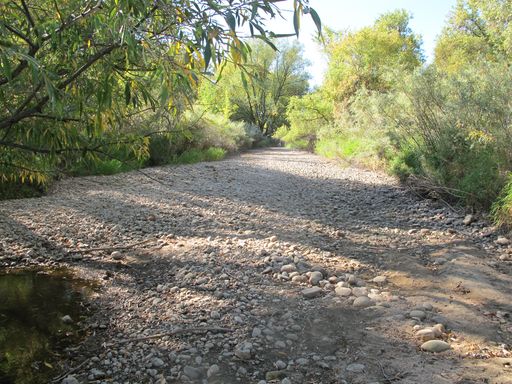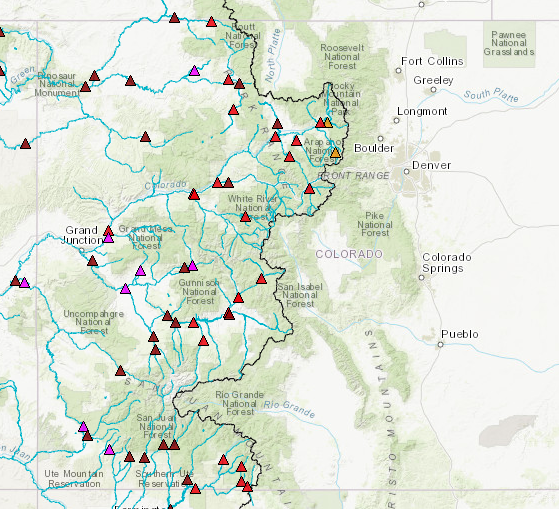This summer, many rivers will not have enough water to support the thriving ecosystems and communities around them. Most of Colorado’s rivers and streams face below average streamflows in 2021. Some rivers may even flirt with historic lows. We know that you probably have been see this in the news these days. But we wanted to highlight the potential dire situation, and how it might affect you, your communities and your rivers.

Imagine you are a farmer or rancher, anxiously watching predictions and your local rivers and reservoirs to see if you will have enough water to grow the crops that you and your family depend upon. Or you might be a fishing or boating outfitter, hoping for a flowing summer river to help you recover from a rough 2020 season. Or maybe you are an avid outdoors person, hoping to get out over the summer and enjoy the beauty of flowing rivers and streams and the plants and animals they support. Low river flows and dry conditions will make summer harder for all of these people.
The Colorado Basin River Forecast Center is one of the entities that tracks and predicts streamflow and expected runoff on the Western Slope. If you take a look at the map below (click on this link or on the map to visit their site and see the full map), you can see that the western part of the state is covered with red and purple triangles. The red triangles represent expected runoff volumes between 30% and 70% of normal over the next few months. The purple triangles represent forecasts of less than 30% of the normal runoff for that river reach.

Think about taking half of the water out of your local swimming pool and then telling everyone to jump in. Things are probably going to get crowded and the shallow end of the pool will likely be dry. That’s similar to what happens to a river when it faces low flows. The lower water levels expose sensitive habitat needed for fish and other wildlife and cause them to crowd together in the still wet areas. With the hot Colorado sun baking down on the water, it’s also going to heat up a lot quicker during the day, which can further stress overtaxed fish. Diseases spread more quickly, as well, in these tighter quarters.
So, what does this mean for you? Well, if you fall into one of the above groups, you already know it’s going to be a hard summer. It means that there will be less water to go around for agriculture, cities, businesses, recreation, and the environment. Think about what it means for a community if there are less people fishing, boating, and recreating around its river because there are restrictions on activities (typically placed on rivers during low flows to protect fish species and other natural resources). This reduced recreational use can impact outfitters, gear shops, and others. And it’s not just businesses that rely directly on rivers – less tourist and recreation traffic means fewer dollars going to the local restaurants, grocery stores, and hotels.

What can you do to help? Hopefully, we’ve now got you as concerned as we are about the forecasts, but there are ways you can help out. You can support your local businesses that rely upon rivers. Buy food from your local farmers and ranchers (click here for a list of Colorado grown products), many communities have farmers markets as well (click here for a list of markets around the state). You can call your local boating and fishing outfitters and learn where you should boat or fish to minimize impact, maybe even buy some gear from them. If you are an angler, you can try to limit your fishing to higher elevation streams or fish during the cooler times of the day, when the fish are less stressed.
Or, of course, you can support Colorado Water Trust. For twenty years we have focused solely on finding win-win solutions to get water back in rivers and streams. We work with the farmers, ranchers, city utilities, and other water users to make sure they feel good about contributing some of the water they have rights to towards keeping rivers and streams healthy. We will be working hard this spring and summer to mitigate the worst of the low flow points in rivers we work on. Please consider joining our monthly support Tributaries Program, or give a one-time gift today. And most of all, please take care this summer and get out near your rivers, they need you.
For those of you who want to dig further into the drought, climate, and streamflow projections, check out this dashboard put together by the Western Water Assessment team with a list of resources.